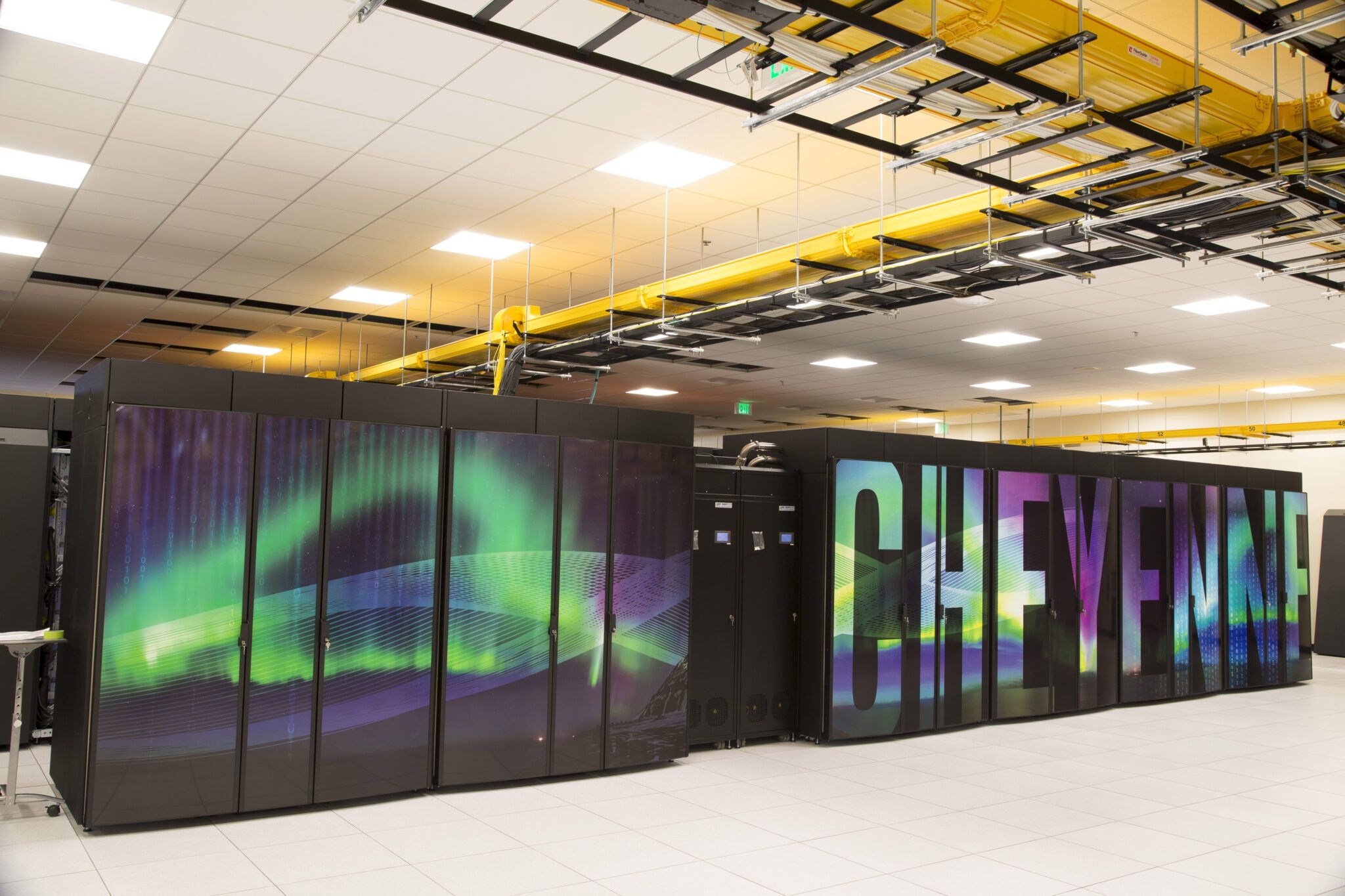NCAR launches operations of supercomputer Cheyenne in Wyoming

CHEYENNE, Wyo. — The National Center for Atmospheric Research is launching operations this month of one of the world’s most powerful and energy-efficient supercomputers, seeking to advance understanding of the atmospheric and related Earth system sciences.
Named Cheyenne, the 5.34-petaflop system is capable of more than triple the amount of scientific computing performed by the previous NCAR supercomputer, Yellowstone. It also is three times more energy-efficient.
Scientists across the country will use Cheyenne to study phenomena ranging from wildfires and seismic activity to gusts that generate power at wind farms. Their findings will lay the groundwork for better protecting society from natural disasters, lead to more detailed projections of seasonal and longer-term weather and climate variability and change, and improve weather and water forecasts that are needed by economic sectors from agriculture and energy to transportation and tourism.
SPONSORED CONTENT
The many benefits of simple, coordinated healthcare
Kaiser Permanente combines health care and coverage in one connected system to maximize employee health and minimize employer costs.
“Cheyenne will help us advance the knowledge needed for saving lives, protecting property, and enabling U.S. businesses to better compete in the global marketplace,” said Antonio J. Busalacchi, president of the University Corporation for Atmospheric Research. “This system is turbocharging our science.”
Boulder-based UCAR manages NCAR on behalf of the National Science Foundation.
Cheyenne ranks as the 20th fastest supercomputer in the world and the fastest in the Mountain West, although such rankings change as new and more powerful machines begin operations. It is funded by NSF, as well as by the state of Wyoming through an appropriation to the University of Wyoming.
Cheyenne is housed in the NCAR-Wyoming Supercomputing Center. Since the NWSC opened in 2012, more than 2,200 scientists from more than 300 universities and federal labs have used its resources.
“Through our work at the NWSC, we have a better understanding of such important processes as surface and subsurface hydrology, physics of flow in reservoir rock, and weather modification and precipitation stimulation,” said William Gern, vice president of research and economic development at the University of Wyoming. “Importantly, we are also introducing Wyoming’s school-age students to the significance and power of computing.”
The NWSC is located in Cheyenne, and the name of the new system was chosen to honor the support the center has received from the people of that city. The name also commemorates the upcoming 150th anniversary of the city, which was founded in 1867 and named for the American Indian Cheyenne Nation.
The new system has a peak computation rate of more than 3 billion calculations per second for every watt of energy consumed. That is three times more energy-efficient than the Yellowstone supercomputer.
The data-storage system for Cheyenne provides an initial capacity of 20 petabytes, expandable to 40 petabytes with the addition of extra drives. The new DDN system also transfers data at the rate of 220 gigabytes per second, which is more than twice as fast as the previous file system’s rate of 90 gigabytes per second.
Cheyenne is the latest in a long line of supercomputers supported by the NSF and NCAR to advance the atmospheric and related sciences.
CHEYENNE, Wyo. — The National Center for Atmospheric Research is launching operations this month of one of the world’s most powerful and energy-efficient supercomputers, seeking to advance understanding of the atmospheric and related Earth system sciences.
Named Cheyenne, the 5.34-petaflop system is capable of more than triple the amount of scientific computing performed by the previous NCAR supercomputer, Yellowstone. It also is three times more energy-efficient.
Scientists across the country will use Cheyenne to study phenomena ranging from wildfires and seismic activity to gusts that generate power at wind farms. Their findings will lay the groundwork…
THIS ARTICLE IS FOR SUBSCRIBERS ONLY
Continue reading for less than $3 per week!
Get a month of award-winning local business news, trends and insights
Access award-winning content today!

